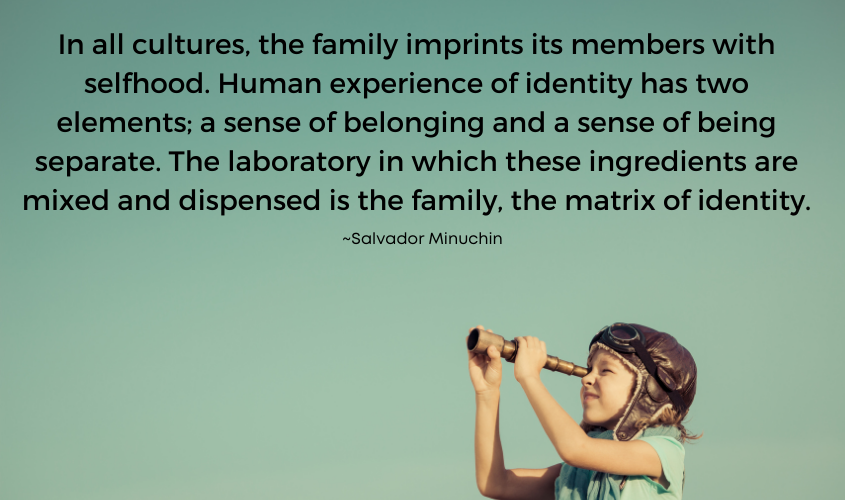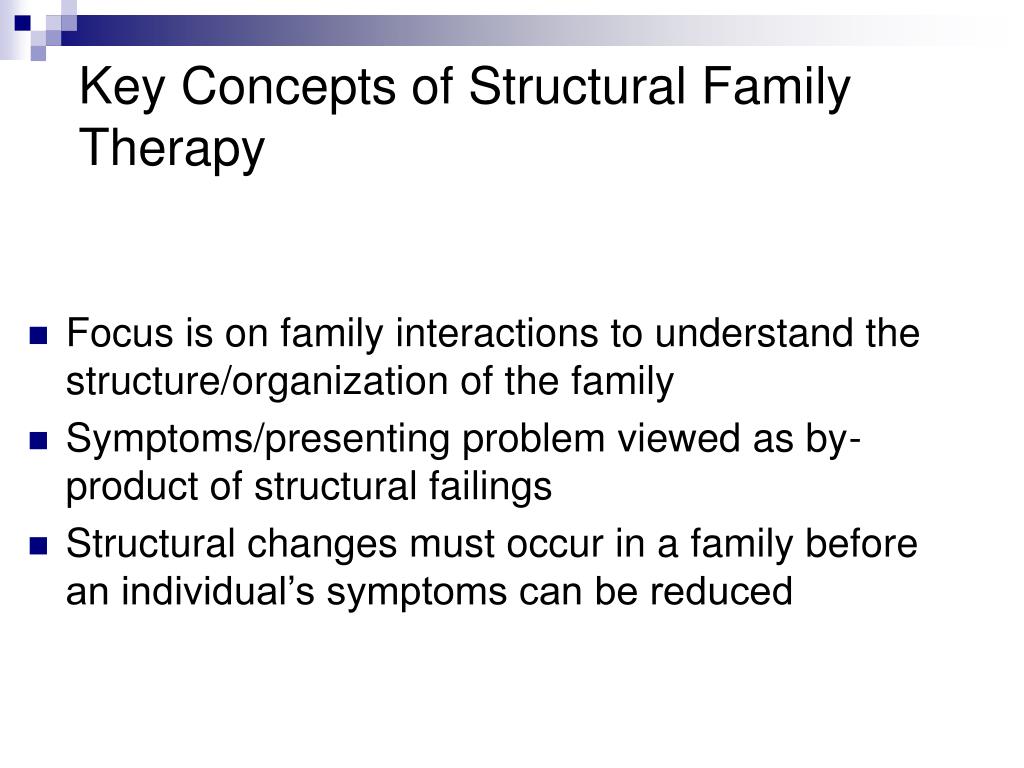Structural family therapy is a form of psychotherapy that focuses on the way that family members relate to each other and the roles that they play within the family system. It was developed in the 1960s by Salvador Minuchin, a psychiatrist and family therapist, and is based on the belief that the structure and functioning of a family can have a significant impact on the individual and collective well-being of its members.
Structural family therapy aims to identify and address the underlying dynamics that contribute to family problems. This involves looking at the roles, rules, and boundaries within the family and how they shape communication and interactions between family members. It also involves examining how the family functions as a system, with each member playing a unique role in maintaining the system's balance.
One key concept in structural family therapy is the idea of enmeshment, which refers to the lack of clear boundaries between family members. Enmeshment can lead to problems such as difficulty with independence and individuality, and can also contribute to the maintenance of problematic behaviors. Structural family therapists may work with families to establish more healthy boundaries and encourage the development of individual identity within the family system.
Another important aspect of structural family therapy is the concept of triangulation, in which one family member becomes the "messenger" between two other members, leading to distorted communication and problems in resolving conflicts. Structural family therapists may work with families to improve communication patterns and reduce the use of triangulation.
Structural family therapy typically involves working with the entire family together, rather than just with individual members. This approach allows the therapist to observe the interactions between family members and identify patterns of behavior that may be contributing to problems. The therapist may also work with the family to identify goals for therapy and create a plan for making changes to the family's structure and functioning.
In conclusion, structural family therapy is a form of psychotherapy that focuses on the structure and functioning of the family system and how it impacts the well-being of individual family members. It aims to identify and address the underlying dynamics that contribute to family problems, such as enmeshment and triangulation, and works with the family to establish healthier boundaries and communication patterns.
Week 3

He believed that the more members of a family participate, including extended family members, in some cases, the better the outcome of the treatment would be. It can help to identify problem areas and possible solutions. Or, they might expect their child to start working in the family business while in elementary school. SFT is a brief, time-limited therapy that typically lasts for 12-20 sessions. This ensures that they have met the necessary education and training requirements.
Minuchin's Structural Therapy and How it Can Transform Families

It was focused on the realignment of family relationships so that the family could maximize its potential holistically rather than transforming the individual members. Structural family therapy refers to a type of psychotherapy that focuses on family relationships and interactions. Important rules for a therapist to study include coalitions, boundaries, and power hierarchies between subsystems. In addition, the therapist also works to teach families how to resolve conflict in a constructive manner. Routledge; New York, NY, USA: 2011.
The Structural Family Therapy Concept

Conclusion To conclude structural family therapy is a type of family therapy that focuses on changing the interactions and relationships between family members. It is believed that this can help to reduce Role-playing The role-playing technique is used to help clients explore different ways of behaving in a particular situation. During this process, the therapist creates a visual representation that identifies the family's problems and how those issues are maintained through family dynamics. It might interest you. It is not meant to be confrontational, but to push family members to reconsider their perception of how the family operates. Change, then, occurs in the subsystem level and is the result of manipulations by the therapist of the existing subsystems, and is maintained by its greater functionality and resulting changed frames of reference and positive feedback. This will save you a lot of money in the long run.
Structural Family Therapy: Definition, Types, Uses & Techniques

He believed that families could be helped by changing the way they interact with each other So, structural family therapy is a type of therapy that focuses on family relationships and interactions, with the goal of helping families identify and change negative patterns of behavior. Since SFT requires the therapists to act as a member of the family, they have the capability to request different behaviors and change the perceptions. Family migration and cluster markers make it simple to visually identify migrations and clusters within your family data. What Needs to Happen for Change to Occur According to Nichols 2010 , Structural Therapy changes behavior by opening alternative patterns of interaction that can modify family structures. The family is subject to essential influences from the external aspects so that its structure is not only shaped by the members, but also the environment within which it lives Rivett, 2010. The aim of such interventions is often to cause the unbalancing of the family system, in order to help them to see the dysfunctional patterns and remain open to restructuring. In essence, the restructuring involves the changing of relative positions of the family members.






